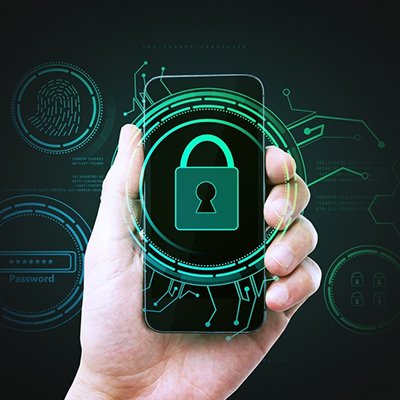When Lattice Semiconductor, a developer and marketer of high performance programmable logic devices, acquired a new site in Shanghai, they ended up with much more than just a new facility. It prompted a fresh look at their video security efforts worldwide.
The company had begun installing the Kollector digital video recorders from Vicon when they acquired some new facilities.
"We had several acquisitions in 2001 and 2002, so we had to build security systems around that," says Eric Morse, CPP, Corporate Security Manager, Lattice Semiconductor, Hillsboro, Oregon. "When we did that, we designed to go to the DVR. We took a look at different product lines and were most comfortable with Vicon."
Once they had established a standard throughout the new facilities, they followed a policy to also bring the older facilities up to standard for consistency, Morse says. However, during the process of bringing the Shanghai facility online, Vicon came out with the newer Kollector Elites. "When those became available, we liked the platform and the software that they were based on, and we knew this was a product that we would find more useful than the older product."
Currently, Lattice has four facilities - one in Shanghai, one in England and two in San Jose, California - outfitted with the newer Kollector Elites. But they plan to upgrade all nine locations by the end of 2004, Morse says.
Access and video working together
One of the main things Lattice wanted the new DVRs to do was to supplement their integrated access control system in a very user-friendly way. "We were looking for our remote sites to have a stand-alone system that would record locally 24/7 but allow corporate headquarters to access that information at any point in time," Morse says. "We also have an integrated access control system. We use the Vicon DVR to supplement that. We monitor doors through the CCTV."
"One of our main concerns is having only employees enter our facilities, no outside people. We also wanted to monitor for current employees verses prior employees, to monitor any equipment loss or internal theft by contractors or janitorial staff, and anything else off hours that could be suspicious."
To do that, they set up various alarm modules for motion sensitivity. "It will send an alarm locally and to corporate if there is any movement," Morse says. "That's all done with Vicon software. You can bring up a camera and grid that view. You can grid the whole view, or just the door. You can also set the sensitivity so if a cat or a dog outside passes by it won't alarm, but if a person does, that takes up more pixels and will cause an alarm. All this takes place before the person ever gets to the access control system."
But because these events take place over the corporate wide area network, Morse says there was a bandwidth utilisation question from the IS department. "We had a conference call with Vicon and they sat down with our IS department and walked them through the process. Locally, they set up similar machines and put a sniffer on there to measure how much bandwidth they would be taking up. They do take up more bandwidth, but it was something IS was able to work with."
Now when there is an incident, the KE's also allow more flexibility than other products, or even the prior model, Morse says. "I can set the quality level of the video I want to capture. The higher the quality, the more storage you are taking up. The lower the quality, the more storage and history you can archive. I can balance that by camera. For archiving, I can archive directly to AVI files. There are just a lot more end user features."
Another plus, and a major feature Lattice was interested in, is the court admissibility. "We had someone break in to one of our facilities," Morse says. "One of the nice things about the Elite is that it is date/time stamped and admissible in court. Any time data is brought back, it checks and makes sure it hasn't been tampered with and is still court admissible."
Just like being there
For Morse, being able to control everything remotely is the best feature of the new system. "That is the number one benefit for me," he says. "At my location I don't even have any Kollectors. With my software I can pick and choose any Kollector and change or modify, record locally onto my PC, change camera settings - all from a couple thousand miles away."
"If I am at my corporate facility, I can run software and it's just like I am sitting there in Shanghai, just like I was there locally. Most DVRs can't do that."
Another benefit was being able to "see" things first hand. "We have remote locations and we have security officers that have policies and procedures they are supposed to follow," Morse says. "The first night we had a Kollector Elite installed, we were able to see several violations of procedures and policies that have since been corrected. There were different posts that were supposed to be monitored, uniform requirements, that sort of thing. You can call an officer and talk to them on the phone, but until you see the video you can't tell what's really going on."
Overall, Morse is very pleased with the results so far. "In a nutshell, it has simplified the process of reviewing video. It doesn't matter what the incident is, the Elites make it simpler than analogue and simpler than with the older Kollectors. Whether it's a question about a janitor locking a door or burglary, it saves me a lot of time in tracking down when that event occurred. It's a matter of minutes verses hours or even days."
The company had begun installing the Kollector digital video recorders from Vicon when they acquired some new facilities.
"We had several acquisitions in 2001 and 2002, so we had to build security systems around that," says Eric Morse, CPP, Corporate Security Manager, Lattice Semiconductor, Hillsboro, Oregon. "When we did that, we designed to go to the DVR. We took a look at different product lines and were most comfortable with Vicon."
Once they had established a standard throughout the new facilities, they followed a policy to also bring the older facilities up to standard for consistency, Morse says. However, during the process of bringing the Shanghai facility online, Vicon came out with the newer Kollector Elites. "When those became available, we liked the platform and the software that they were based on, and we knew this was a product that we would find more useful than the older product."
Currently, Lattice has four facilities - one in Shanghai, one in England and two in San Jose, California - outfitted with the newer Kollector Elites. But they plan to upgrade all nine locations by the end of 2004, Morse says.
Access and video working together
One of the main things Lattice wanted the new DVRs to do was to supplement their integrated access control system in a very user-friendly way. "We were looking for our remote sites to have a stand-alone system that would record locally 24/7 but allow corporate headquarters to access that information at any point in time," Morse says. "We also have an integrated access control system. We use the Vicon DVR to supplement that. We monitor doors through the CCTV."
"One of our main concerns is having only employees enter our facilities, no outside people. We also wanted to monitor for current employees verses prior employees, to monitor any equipment loss or internal theft by contractors or janitorial staff, and anything else off hours that could be suspicious."
Lattice wanted the new DVRs to supplement their integrated access control system in a very user-friendly way |
To do that, they set up various alarm modules for motion sensitivity. "It will send an alarm locally and to corporate if there is any movement," Morse says. "That's all done with Vicon software. You can bring up a camera and grid that view. You can grid the whole view, or just the door. You can also set the sensitivity so if a cat or a dog outside passes by it won't alarm, but if a person does, that takes up more pixels and will cause an alarm. All this takes place before the person ever gets to the access control system."
But because these events take place over the corporate wide area network, Morse says there was a bandwidth utilisation question from the IS department. "We had a conference call with Vicon and they sat down with our IS department and walked them through the process. Locally, they set up similar machines and put a sniffer on there to measure how much bandwidth they would be taking up. They do take up more bandwidth, but it was something IS was able to work with."
Now when there is an incident, the KE's also allow more flexibility than other products, or even the prior model, Morse says. "I can set the quality level of the video I want to capture. The higher the quality, the more storage you are taking up. The lower the quality, the more storage and history you can archive. I can balance that by camera. For archiving, I can archive directly to AVI files. There are just a lot more end user features."
Another plus, and a major feature Lattice was interested in, is the court admissibility. "We had someone break in to one of our facilities," Morse says. "One of the nice things about the Elite is that it is date/time stamped and admissible in court. Any time data is brought back, it checks and makes sure it hasn't been tampered with and is still court admissible."
Just like being there
For Morse, being able to control everything remotely is the best feature of the new system. "That is the number one benefit for me," he says. "At my location I don't even have any Kollectors. With my software I can pick and choose any Kollector and change or modify, record locally onto my PC, change camera settings - all from a couple thousand miles away."
"If I am at my corporate facility, I can run software and it's just like I am sitting there in Shanghai, just like I was there locally. Most DVRs can't do that."
Another benefit was being able to "see" things first hand. "We have remote locations and we have security officers that have policies and procedures they are supposed to follow," Morse says. "The first night we had a Kollector Elite installed, we were able to see several violations of procedures and policies that have since been corrected. There were different posts that were supposed to be monitored, uniform requirements, that sort of thing. You can call an officer and talk to them on the phone, but until you see the video you can't tell what's really going on."
Overall, Morse is very pleased with the results so far. "In a nutshell, it has simplified the process of reviewing video. It doesn't matter what the incident is, the Elites make it simpler than analogue and simpler than with the older Kollectors. Whether it's a question about a janitor locking a door or burglary, it saves me a lot of time in tracking down when that event occurred. It's a matter of minutes verses hours or even days."





